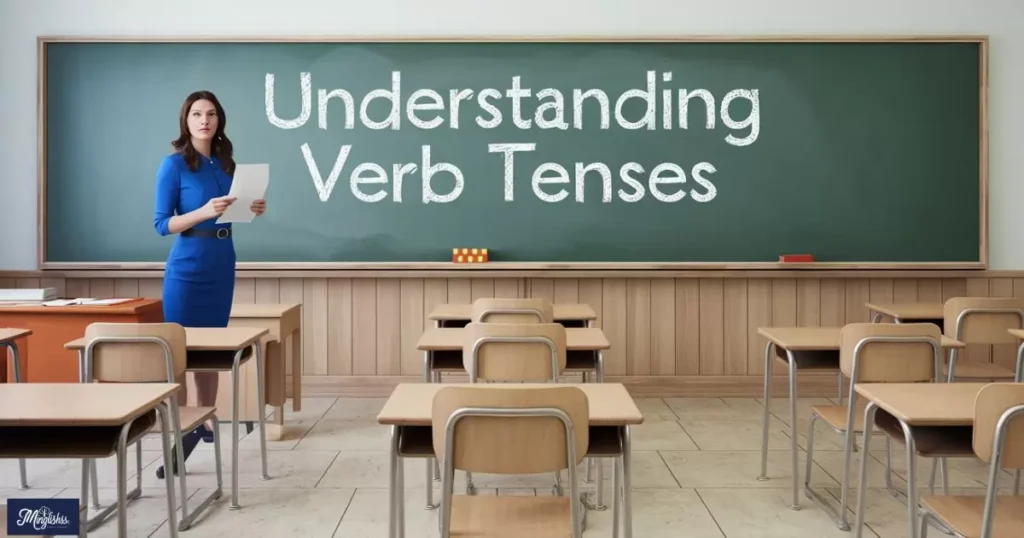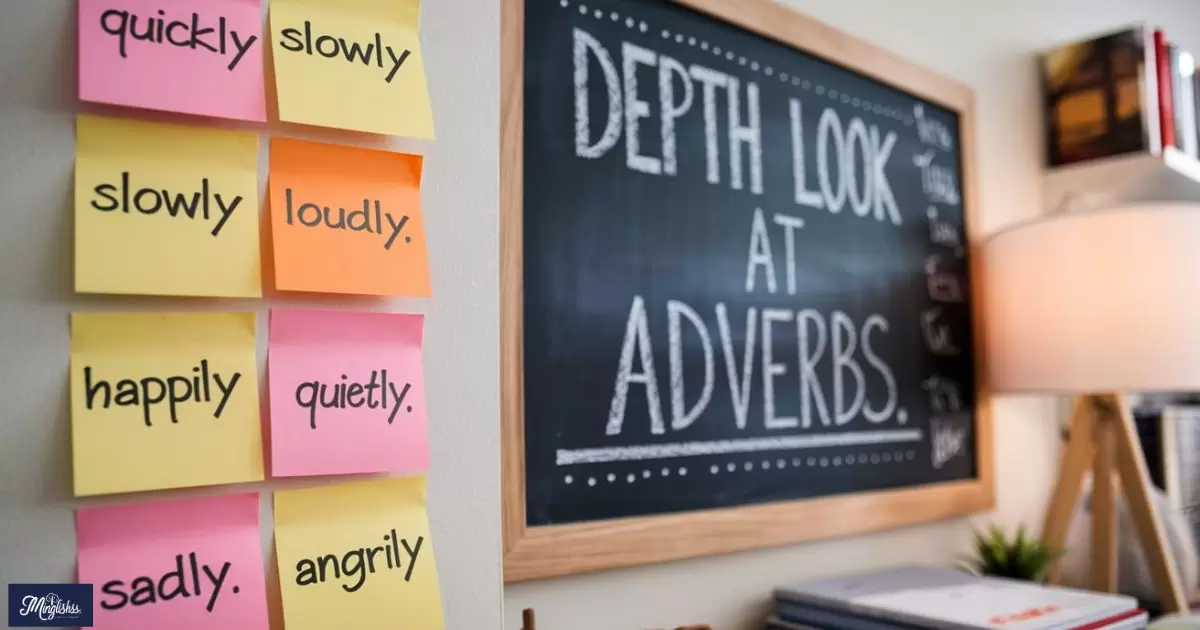Understanding grammar is essential for mastering any language. Adverbs, in particular, play a crucial role in shaping the meaning and tone of sentences. They provide details about how, when, where, and to what extent actions occur, making communication more precise and engaging.
For anyone looking to improve their writing or speaking skills, a solid grasp of adverbs is a must. This blog post will guide you through the fundamentals of adverbs, their classifications, and their usage in various contexts. We’ll also explore common tense forms like the present perfect continuous and show you how adverbs fit into different sentence structures.
By the end of this post, you’ll have a clear understanding of how to use adverbs effectively, enhance your sentences, and avoid common mistakes. We’ll also address some frequently asked questions to ensure that all your doubts are cleared. Let’s dive in!
What is an Adverb?
An adverb is a word that modifies a verb, adjective, or another adverb. It provides additional information about how, when, where, or to what extent something happens. For example, in the sentence “She sings beautifully,” the adverb “beautifully” describes how she sings.
Types of Adverbs
Adverbs can be classified into several categories based on their function:
1. Adverbs of Manner
These adverbs describe how an action is performed. Examples: quickly, slowly, loudly, silently, well.
- He speaks quickly in meetings.
- She writes neatly on the board.
- They work hard on their projects.
- The cat moves silently through the night.
- John performs well under pressure.
Note: Adverbs of manner often end in “-ly,” but there are exceptions like “well” and “hard.”
2. Adverbs of Time
These adverbs tell us when something happens. Examples: yesterday, today, now, later, soon.
- We will meet later today.
- She arrived yesterday afternoon.
- They are leaving now for the event.
- I will finish soon after this task.
- He called earlier in the morning.
Note: Adverbs of time are versatile and can be placed at the beginning, middle, or end of a sentence.
3. Adverbs of Place
These adverbs describe where an action occurs. Examples: here, there, everywhere, outside, inside.
- She is waiting outside the building.
- The book is over there on the shelf.
- He searched everywhere for his keys.
- They walked inside the room quietly.
- I will sit here by the window.
Note: Adverbs of place help create a vivid image of the location of actions in the reader’s mind.
4. Adverbs of Frequency

These adverbs explain how often something happens. Examples: always, often, sometimes, rarely, never.
- He always arrives early for meetings.
- They rarely watch television.
- She sometimes goes to the gym after work.
- We never eat fast food.
- You should frequently check your emails.
Note: Adverbs of frequency are typically placed before the main verb in a sentence.
5. Adverbs of Degree
These adverbs indicate to what extent something happens. Examples: very, quite, almost, too, enough.
- The water is very cold in the pool.
- She is quite tired after the long day.
- He is almost finished with his project.
- The soup is too hot to eat right now.
- You are skilled enough to handle this task.
Note: Adverbs of degree often intensify or weaken the meaning of the adjective or verb they modify.
Understanding Verb Tenses

Verb tenses are essential in conveying the time of an action. Below, we’ll explore some common tenses:
1. Present Simple
The present simple tense is used for habitual actions or general truths. Examples:
- He writes every day.
- They live in New York.
- The sun rises in the east.
2. Present Continuous
The present continuous tense describes actions happening right now or around the present time. Examples:
- She is reading a book.
- They are playing outside.
- I am writing a letter.
Quick Guide: Abbreviation for Assembly in Different Contexts
3. Present Perfect
The present perfect tense is used to describe actions that happened at an unspecified time before now. Examples:
- He has finished his homework.
- They have moved to a new city.
- I have seen that movie.
4. Present Perfect Continuous
The present perfect continuous tense describes actions that started in the past and are still continuing. Examples:
- She has been working here for five years.
- They have been studying since morning.
- I have been reading this book for hours.
Note: Understanding verb tenses is crucial for conveying time accurately in your writing.
Answers to Key Questions
Q1: What is the difference between an adverb and an adjective?
A1: An adjective describes a noun or pronoun, while an adverb modifies a verb, adjective, or another adverb. For example, in “She is a fast runner,” “fast” is an adjective. In “She runs fast,” “fast” is an adverb.
Q2: Can adverbs modify entire sentences?
A2: Yes, adverbs can modify entire sentences. These are often called sentence adverbs and usually express the speaker’s opinion. Examples: fortunately, clearly, obviously. For example, “Fortunately, we arrived on time.”
Q3: Where should adverbs be placed in a sentence?
A3: The placement of adverbs can vary depending on their type. For instance, adverbs of frequency often go before the main verb, while adverbs of manner typically follow the verb or object.
Q4: Can an adverb modify an adjective?
A4: Yes, an adverb can modify an adjective. It usually provides more detail about the adjective. Examples: “She is very happy,” “The movie was quite interesting.”
Q5: What is an example of a sentence with multiple adverbs?
A5: A sentence can have multiple adverbs modifying different parts. Example: “She sings beautifully and always arrives early.”
Conclusion
Adverbs are versatile tools that add depth and detail to your sentences. They help convey how, when, where, and to what extent actions happen, making your communication clearer and more engaging.
By understanding the different types of adverbs, their uses, and how they interact with verbs and other parts of speech, you can improve your writing and speaking skills significantly.
Remember, mastering adverbs and verb tenses takes practice, but the reward is more precise and powerful communication. Whether you’re writing an essay, giving a presentation, or having a casual conversation, using adverbs correctly can make a significant difference.
Feel free to revisit this guide whenever you need a refresher, and don’t hesitate to experiment with adverbs in your writing

Hi, I’m Zadie Smith: I’m dedicated to helping others master English through practical tips. I enjoy making complex ideas simple and accessible for everyone.










